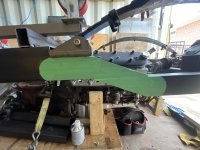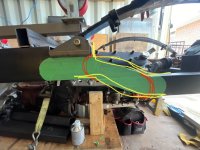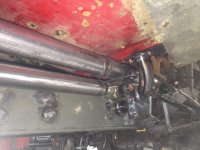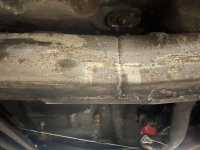RICHARD TONER has spent entire days giving a truck-frame seminar for the National Truck Equipment Association. He knows that much about truck frames.
Toner, president of Toner & Associates (Pentwater, Michigan) and the NTEA's first staff engineer, said the frame is “the backbone of the truck” because “it carries the loads we put on trucks.”
He said most trucks use ladder-type frames with side rails and crossmembers, and the frames are subjected to three types of loads: vertical, torsional, and side.
Side rails support vertical and side loads such as engine, transmission, fuel tanks, battery boxes, suspensions, bodies, work equipment, and cargo. The crossmembers provide torsional rigidity and support components such as the engine, transmission, and radiator. In addition, he said the crossmembers prevent the side rails from twisting with side loads such as the fuel tank and battery box.
“A frame section supported at each end loaded in the middle is in compression at the top and in tension at the bottom,” he said. “There is a neutral axis where there is no stress in the frame. Holes and welding at the neutral axis will not significantly affect frame strength. Holes and welding near the flanges can cause frame failure. Chassis manufacturers restrict the size and location of holes, and most also restrict welding on the frames.”
He said moments are force, or weight, multiplied by distance. One pound times one foot is 1 ft-lb. One pound times 12" is 12 in-lb. They are both the same moment. He said moments on a truck frame can be measured from the front axle, the front end of the frame, or any other point as long as all forces are included. Up forces are positive and down forces are negative.
“The high-moment area is right behind the cab,” he said. “And where do we like to put mounts? Right behind the cab. They're OK if you stay away from the flanges.
“Now you see tractors converted into dump trucks. A tractor frame is not a straight frame. They don't have the right crossmembers to be dump trucks. We seem to pay attention to side rails. We don't pay enough attention to crossmembers. With the same load, the maximum tractor moment is more than twice the straight truck.”
He elaborated on some truck frame nomenclature, saying: a web is the vertical section of a frame rail; a flange is the horizontal section of a frame rail, located at the top and/or bottom of the rail; a centroid is the center of the material in a cross-section of the frame rail; and shear center is the point that takes a vertical load without collapsing the frame rail.
He said yield strength defines the material and is the maximum stress that the material will sustain without permanent distortion. It is related to ultimate strength.
“If it changes shape, you've exceeded the yield strength,” he said.
He said typical values are: 35,000 psi for mild steel, 110,000 psi for alloy steel, and over 110,000 psi for heat-treated steel. When mixing materials of different yield strengths, the lowest value must be used for calculations.
“If I have a frame that is 50,000 psi and reinforcement that is 50,000 psi, use 50,000 yield strength,” he said.
He said the section modulus defines the shape of the frame material in inches to the third power. It is related to the moment of inertia and stiffness. He said published literature can be as much as 30% too high.
“Information is getting better — I will say that,” he said. “But don't trust them. It's not the engineers who are providing the bad information — it's the marketing guys. They can't sell a frame that is 30% less strong than it was last year.”
Toner said ultimate/tensile strength is the maximum stress before failure by separating; dynamic loading is loads put into a frame from acceleration, braking, road irregularities, etc; and fatigue is the behavior of a material when subjected to cyclically applied stress, which can result in a crack and failure.
“Fatigue is what kills truck frames — not tensile strength or yield strength,” he said. “Fatigue is when you bend something until it breaks. Every material has an elastic zone. If I bend the material and don't exceed the yield strength, it will come back. If I get past the yield strength, I've strained it. It doesn't go back to the original shape.”
Toner said resisting bending moment (RBM) describes the ability of the frame to resist the moments from the load and truck components; section modulus describes the shape of the material; and yield strength describes the material strength.
Toner said the RBM is the product of the section modulus (SM) and the yield strength (YS) in inch-pounds and is a measure of the capability of the frame rail. He said some manufacturers of equipment such as cranes specify either a section modulus or RBM for the chassis frame. Chassis manufacturers supply frame information with RBM, section modulus, and yield strength in truck data books and body builders books.
So, RBM = SM × YS.
“Why is that important?” he asked. “It describes the maximum load the manufacturer says we can put on the frame in moments.”








